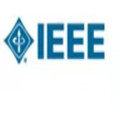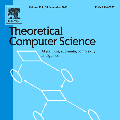Prevailing theory contends that tropical cyclones (TCs) are primarily driven by wind-induced heat exchange between the air and sea. Accurate characterization of the subsurface ocean thermal response to TC passage is crucial for accurate TC intensity forecasts and climatological modeling, yet that characterization is complicated by the high-noise ocean environment, correlations inherent in spatio-temporal data, relative scarcity of in situ observations, and entanglement of the TC-induced signal with seasonal signals. We present a general methodological framework that addresses these difficulties, integrating existing techniques in seasonal mean field estimation, Gaussian process modeling, and nonparametric regression into a functional ANOVA model. Importantly, we improve upon past work by properly handling seasonality, providing rigorous uncertainty quantification, and treating time as a continuous variable, rather than producing estimates that are binned in time. This functional ANOVA model is estimated using in situ subsurface temperature profiles from the Argo fleet of autonomous floats through a multi-step procedure, which (1) characterizes the upper ocean seasonal shift during the TC season; (2) models the variability in the temperature observations; (3) fits a thin plate spline using the variability estimates to account for heteroskedasticity and correlation between the observations. This spline fit reveals the ocean thermal response to TC passage. Through this framework, we obtain new scientific insights into the interaction between TCs and the ocean on a global scale, including a three-dimensional characterization of the near-surface and subsurface cooling along the TC storm track and the mixing-induced subsurface warming on the track's right side.
翻译:流行理论认为,热带气旋(TCs)主要是由风导致的空气和海洋之间的热交换驱动的。对海下海洋下层热反应的准确定性对于准确的TC强度预测和气候模型分析至关重要,然而,由于高噪音海洋环境、时空数据内在的关联性、原地观测相对稀缺性、以及由TC引发的信号与季节性信号的纠缠等原因,确定特征更为复杂。我们提出了一个解决这些困难的一般方法框架,将季节平均实地估算、高山进程模型和非对地表层温度回归的现有技术纳入功能性ANOVA模型。重要的是,我们通过正确处理季节性、提供严格的不确定性量化、将时间作为连续变量处理,从而改进以往工作。这个功能性ANOVA模型使用Argo自动浮标的地面以下温度图谱进行估算,并采用多步程序,从而(1) 描述在TC季节期间的季节性平均季节性估算、高山下线流程模拟和非对地表层温度的回归性回归作用。(2) 模型显示在温度和海洋轨道上对温度变化的深度测量到海流流流流到海流之间的变化。



